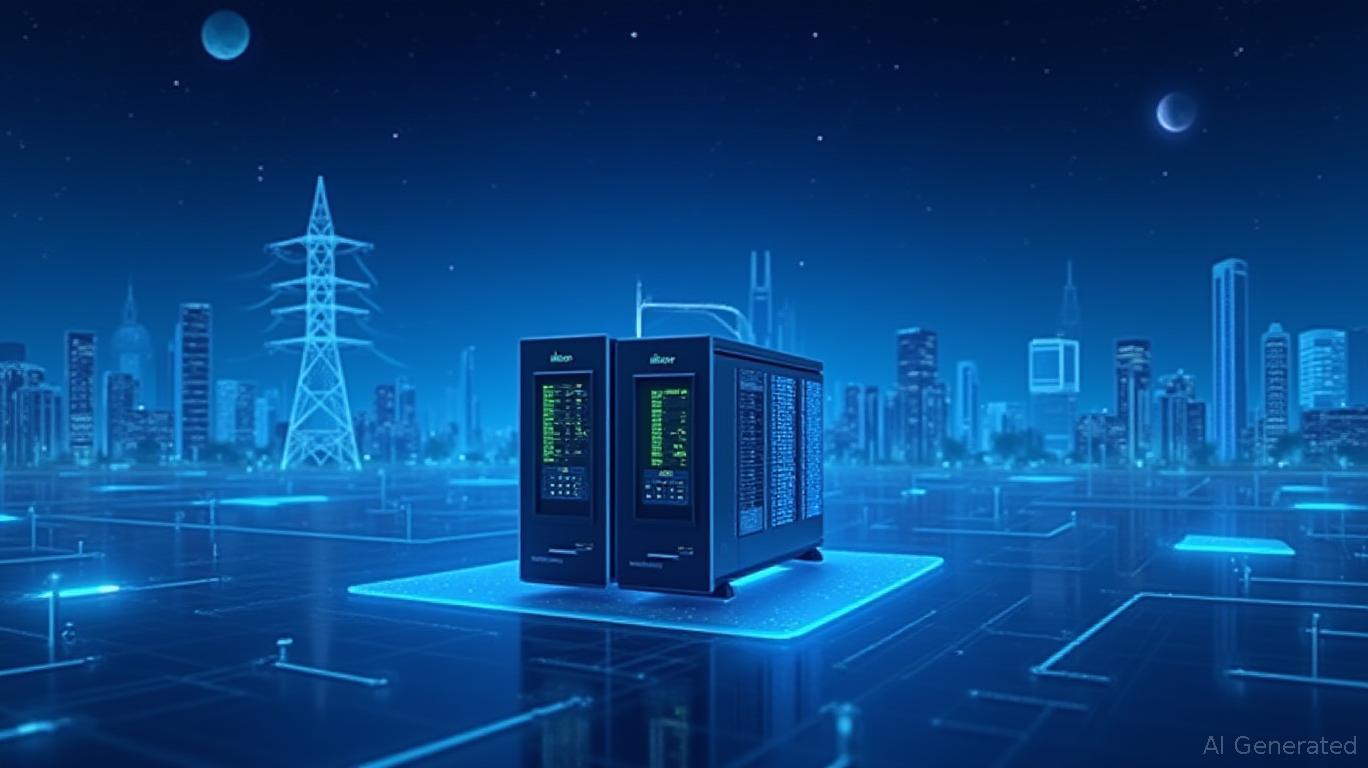Itron's Grid Modernization Play: SaaS, AI, and the Future of Utilities
The global energy transition is driving a $1.2 trillion market for smart grid infrastructure by 2030, and
is positioned at its epicenter. The company's May 2025 partnership with Greece's Hellenic Electricity Distribution Network Operator (HEDNO) marks a pivotal moment in its strategy to dominate the European grid modernization market. By combining a scalable SaaS-driven revenue model with cutting-edge AI integration, Itron is not just keeping pace with utilities' needs—it's redefining them. Here's why this deal, and the technology behind it, signals long-term investment potential.The HEDNO Deal: A Blueprint for SaaS-Driven Grid Modernization
Itron's $320 million contract with HEDNO represents its largest European project to date, managing 7.7 million meters across Greece's grid. At its core is the Enterprise Edition (IEE) Meter Data Management (MDM) system, a hosted SaaS platform that reduces HEDNO's upfront capital costs by 40% compared to traditional on-premise solutions. This shift to recurring revenue streams is transformative:
- The IEE MDM system now manages 50 million endpoints globally, with Greece adding 15% to that total.
- By 2027, Itron expects SaaS contracts to contribute 30% of its total revenue, up from 22% in 2023.

The SaaS model's scalability is its secret weapon. Utilities like HEDNO gain access to real-time data analytics, predictive maintenance tools, and seamless integration with legacy systems—all without massive upfront investments. For Itron, this creates a sticky revenue stream: 85% of SaaS customers renew contracts, and upselling AI-driven add-ons (more on this below) can boost margins further.
AI Integration: Future-Proofing Grids with Azure OpenAI
Itron's partnership with Microsoft isn't just about cloud infrastructure—it's about embedding generative AI into grid management. The IEE MDM system now integrates Microsoft's Azure OpenAI tools, enabling utilities to:
- Query meter data using natural language (e.g., “Show peak load patterns in Athens last summer”).
- Automatically flag anomalies, such as technical losses or potential outages.
- Optimize distributed energy resource (DER) integration, crucial as renewables grow.
This AI layer is a game-changer. For HEDNO, it reduces operational costs by 15-20% through predictive maintenance and improves grid reliability. For Itron, it creates a defensible moat: competitors like Landis+Gyr or Sensus lack this level of AI-native SaaS integration.
The 7.7 Million Meter Milestone: Strategic Significance
Greece's grid is a microcosm of Europe's broader modernization needs. The HEDNO deal:
- Validates Itron's pan-European strategy: With 7.7M meters, Itron's European footprint surpasses even Germany's 5.4M smart meters, positioning it to win similar contracts in Spain, Italy, and beyond.
- Accelerates AI adoption: Data from Greek meters trains Itron's AI models, making them more accurate for other markets.
- Drives margin expansion: SaaS margins average 65-70%, far higher than hardware sales.
Insider Sales vs. Institutional Buying: A Mixed Signal with Clear Upside
While some senior executives sold shares in Q2 2025 (e.g., SVP John Marcolini offloading 14.75% of his holdings), institutional investors are doubling down:
- Norges Bank increased its stake by 134.6%, adding $37M in shares.
- Total institutional ownership hit 96.19%, signaling confidence in Itron's growth trajectory.
The insider sales appear tactical rather than a red flag. With Itron's SaaS backlog growing 25% annually, even executives may diversify holdings while remaining long-term believers.
Risks and Considerations
- Execution risk: Deploying 7.7M meters by 2030 requires flawless project management.
- Regulatory headwinds: EU energy policies could delay meter rollouts in other countries.
- AI adoption lag: Utilities may underutilize the AI tools without training.
Investment Thesis: Buy the Dip, Own the Transition
Itron's valuation remains reasonable at 25x 2025E earnings, with $800M in cash and a 1.5% dividend yield. The HEDNO deal alone adds $30M/year in recurring revenue, and Europe's $80B smart meter market offers ample upside.
For investors:
1. Buy on dips below $115 (current price as of June 2025): The stock has a 12-month target of $140–$150.
2. Monitor institutional buying: Continued support from Norges Bank and others is a key bullish signal.
3. Watch SaaS adoption rates: A 30%+ SaaS revenue contribution by 2027 would validate Itron's model.
Conclusion
Itron's HEDNO partnership isn't just about meters—it's a template for the utility of the future. By combining SaaS scalability with AI-driven intelligence, Itron is turning grid modernization from a cost center into a profit engine. With Europe's energy transition in full swing and institutional investors accumulating shares, this is a rare opportunity to bet on a company at the intersection of two megatrends: digital transformation and decarbonization.
For long-term investors willing to look past near-term execution risks, Itron offers a compelling entry point to profit from the grid of tomorrow.
Sign up for free to continue reading
By continuing, I agree to the
Market Data Terms of Service and Privacy Statement

Comments
No comments yet